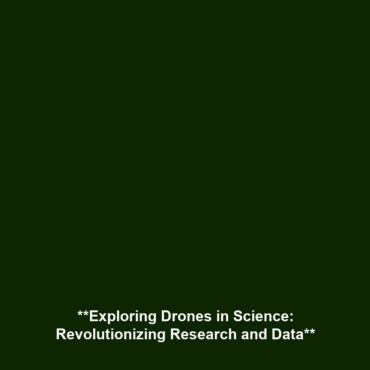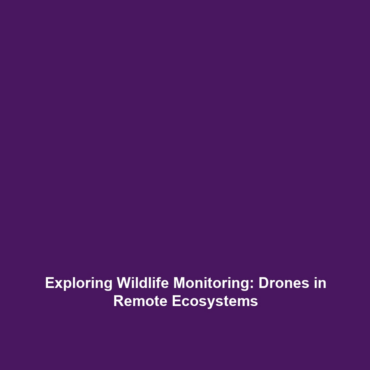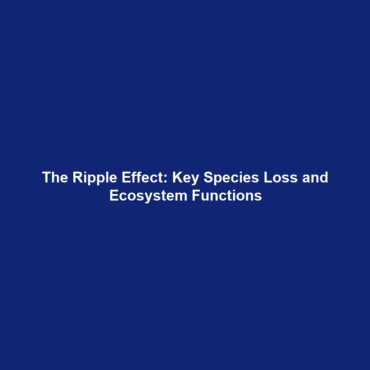Introduction to Drones in Science
Drones have revolutionized various fields, and their significance in science is becoming increasingly evident. This article explores the introduction to drones in science, demonstrating how these advanced aerial vehicles are reshaping research methodologies, data collection, and environmental monitoring. As we delve into the role of drones in science, we will unveil their transformative impact on sectors ranging from ecology to geology, highlighting key concepts, applications, challenges, and future innovations.
Key Concepts in Drones in Science
The introduction to drones in science encompasses several essential concepts that outline their functionality and relevance:
- Aerial Surveillance: Utilizing drones for monitoring wildlife, habitats, and human impacts on the environment.
- Data Acquisition: Employing various sensors such as cameras and LiDAR for capturing high-resolution data.
- Remote Sensing: Using drones to gather information from hard-to-reach areas, enhancing scientific understanding.
These principles illustrate how drones serve as invaluable tools within the broader category of drones in science, enhancing research efficiency and accuracy.
Applications and Real-World Uses
Drones are finding extensive applications in scientific fields, demonstrating their versatility and effectiveness. Some notable examples include:
- Environmental Monitoring: Drones are employed to track changes in climate, land use, and vegetation patterns.
- Disaster Management: Real-time aerial footage aids in assessing the damage from natural disasters and planning relief efforts.
- Agricultural Research: Drones assist in precision farming, providing data to optimize crop health and yields.
By exploring how drones are used in science, we can appreciate their vast potential and multifaceted contributions to research and innovation.
Current Challenges of Drones in Science
Despite their advantages, the integration of drones in scientific fields faces several challenges, including:
- Regulatory Hurdles: Navigating laws and airspace restrictions that can impede research.
- Technical Limitations: Issues related to battery life and payload capacity can affect data collection capabilities.
- Data Privacy: Ensuring ethical use while avoiding invasion of privacy is a growing concern.
Addressing these challenges is crucial to maximizing the benefits of drones in science.
Future Research and Innovations in Drones in Science
The future of drones in science looks promising, with ongoing innovations aimed at improving capabilities. Potential advancements include:
- Autonomous Flight: Enhanced algorithms for better navigation and decision-making in real-time.
- Advanced Sensors: Development of more sophisticated sensors to collect diverse data types.
- Interdisciplinary Collaboration: Integrating drone technology across various scientific fields to foster groundbreaking research.
These innovations are poised to expand the horizons of research and significantly impact the future of drones in science.
Conclusion
The introduction to drones in science highlights their critical role in advancing research methodologies and data collection techniques. As we continue to explore the applications, challenges, and innovations of drones in science, it is essential to remain engaged with ongoing developments. To learn more about specific applications and case studies, visit our related articles on environmental monitoring and disaster response.


